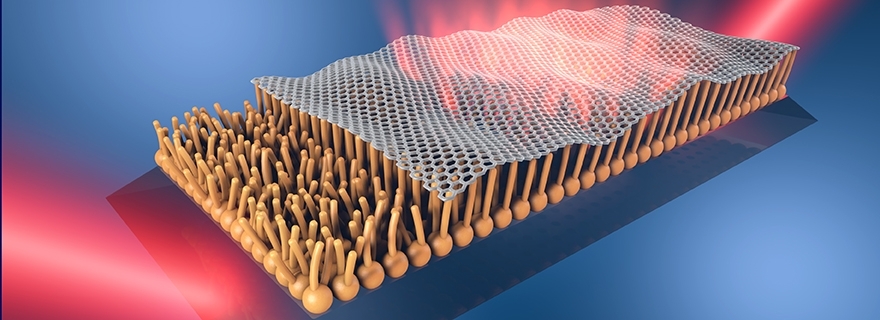
For the first time researchers succeeded to place a layer of graphene on top of a stable fatty lipid monolayer. Surrounded by a protective shell of lipids, graphene could enter the body and function as a versatile sensor. The results are the first step towards such a shell, and have been published in the journal Nanoscale on Sept. 28.
In contrast to previous work, the researchers observed a stable structure when placing graphene on a single layer of lipids. A patent has been submitted for these findings. PhD candidate Lia Lima and co-workers made this discovery under the supervision of chemist Grégory Schneider.
Graphene is a surface material that consists of a single layer of carbon atoms. It is extremely thin, strong and flexible. In addition, graphene is wanted in the technological world for its effective conduction of electricity. The applications of graphene vary widely.
“Graphene is particularly sensitive and can respond to its environment in the body,” says Schneider. Therefore, future applications for the body are for example biosensors and systems that allocate the right spot for performing diagnosis.
To make graphene suitable for these applications, hard inorganic materials are often used as a support. However, these hard materials are not ideal for the use of graphene in the body. For this reason scientists are looking for soft, organic molecules to bind with graphene, in this case lipids.
Lipids are fats that can be found in the protective layer of a cell — the cell membrane. This membrane consists of a double layer of lipids. When graphene could be placed between these two layers, it could travel through the body freely. “A method that is already used with cancer medicines,” explains Schneider. “We made a single layer of lipids in the lab and transferred graphene on top: a first step towards mimicking the cell membrane.”
In their research the scientists discovered that a layer of lipids provides good support to graphene. The researchers used infrared measurements to prove the stability of the lipid layer. They also found that the lipids improve the electrical conduction of graphene. This effect of lipids is promising for future applications. Improvements of electrical conduction make it possible to measure the electrical signals of graphene in the body. These signals tell something about the environment of graphene, like the acidity or the presence of certain proteins.
Eventually graphene could travel through the body when it is stabilized by lipids. “However, we still have a long way to go,” says Schneider. “The next step is to place a lipid layer on both sides of graphene, like a sandwich.”
Source: Leiden University




